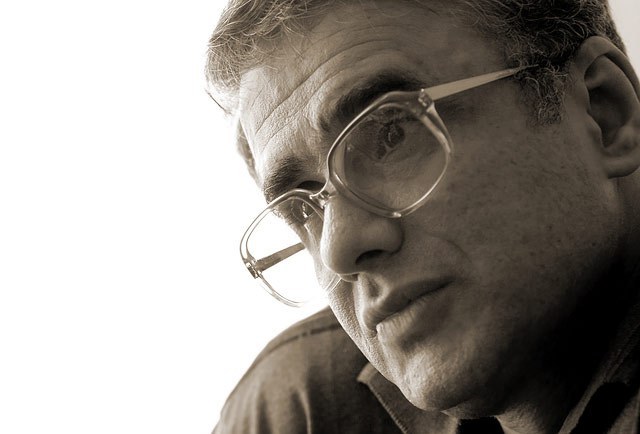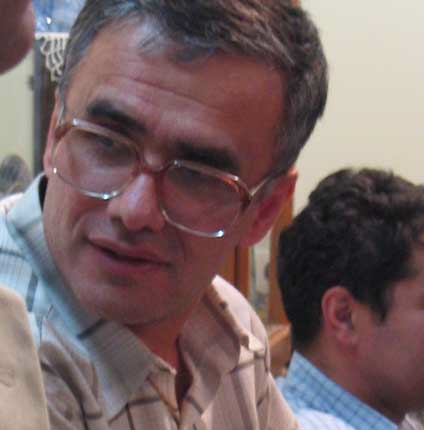 English PEN is seriously concerned about the detention of Taghi Rahmani, who was arrested at his home on 9 February 2011 by men in plain-clothes and was taken to an unknown location.
English PEN is seriously concerned about the detention of Taghi Rahmani, who was arrested at his home on 9 February 2011 by men in plain-clothes and was taken to an unknown location.
Arrested ahead of rally
He is believed to be held without charge and his whereabouts are still unknown. He is considered to be at risk of torture and ill-treatment, and there are fears for his well-being in detention.
He is among a number of activists to be targeted ahead of pro-democracy rally in solidarity with popular uprisings in Egypt and Tunisia which took place on 14 February 2011 in Tehran, and other major cities in the country.
English PEN fears that Rahmani is targeted solely for the peaceful exercise of his right to freedom of expression as guaranteed by Article 19 of the International Covenant on Civil and Political Rights, to which Iran is a party, and calls for his immediate and unconditional release.
Reporters Without Borders say that at the same time, several journalists and bloggers have been summoned for questioning by the Revolutionary Guards and the intelligence ministry in various parts of the country ahead of a demonstration called by government opponents for 14 February.
Rahmani was arrested despite the fact that his wife, fellow journalist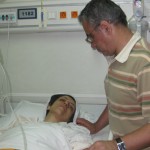 Narges Mohammadi, has been seriously ill ever since her release on 2 July 2010. A spokesperson for the Human Rights Defenders Centre and colleague of Nobel peace laureate Shirin Ebadi, she had been arrested at their home on the evening of 10 June 2010.
Narges Mohammadi, has been seriously ill ever since her release on 2 July 2010. A spokesperson for the Human Rights Defenders Centre and colleague of Nobel peace laureate Shirin Ebadi, she had been arrested at their home on the evening of 10 June 2010.
According to Reporters Without Borders, Rahmani has repeatedly been arrested in connection with his work for newspapers since 1981. He was prosecuted both for working for underground newspapers such as “Pishtazan” and “Movahed” and for working for legal newspapers such as “Iran-e-Farda” and “Omid Zanjan”.
In all, he has spent more than 16 years in Iranian prisons.
Take action!
Take action and send an appeal to Iranian authorities protesting his arrest and calling for his immediate and unconditional release.
Article 19 urged Iran on 14 February to exercise restraint in the face of protests, also to take heed of the revolutions in Egypt and Tunisia and immediately begin a process of real democratisation.
“The international community will be monitoring the Iranian government’s reaction to today’s protest very closely,” said Dr Agnes Callamard, Article 19 Executive Director.
Iran is the world’s leading jailer of journalists, with 34 behind bars – tied with China, Committee’s to Protect Journalists research shows.
As Iran marked the 32nd anniversary of the country’s revolution on February 11, more than 1,000 press freedom supporters delivered a message to Iranian Ayatollah Sayed Ali Khamenei: Free your country’s i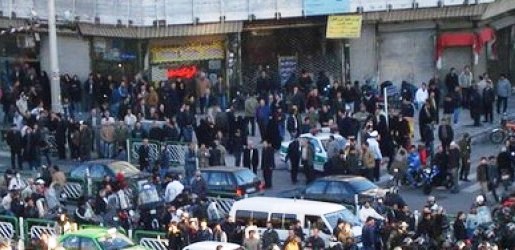 mprisoned journalists.
mprisoned journalists.
Background
On February 14, 2011, demonstrations took place throughout Iran after authorities conducted a wave of arrests against opposition activists, placed the opposition leaders Mir Hossein Mousavi and Mehdi Karroubi under house arrest, and clamped down telephone and satellite communications and the internet, Human Rights Watch says. It is not known how many people were arrested throughout the country.
International bodies, including the United Nations and the European Union, have condemned Iran’s repeated jamming of satellite signals carrying Persian-language programming.
On the morning of February 14, foreign Persian-language media outlets reported a heavy security presence on the streets of Tehran, with demonstration routes that had been designated as gathering sites blocked off to vehicular traffic.
Despite this, thousands of demonstrators in Tehran used sidewalks to march toward the sites, including Azadi Square in Tehran. Security forces continually tried to break up huge crowds and force them onto side streets to make them veer away from demonstration paths. Riot police used batons, sticks and teargas to disperse demonstrators. Numerous of them were injured.
Opposition leaders had sought, but were refused, permits for the protests. In a February 5 letter open letter, Mousavi and Karroubi asked the Interior Ministry 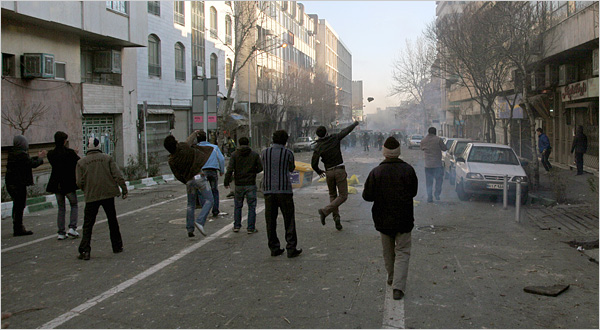 for a permit under article 27 of the Iranian Constitution, which allows public gatherings and marches to “be freely held,” provided “arms are not carried.”
for a permit under article 27 of the Iranian Constitution, which allows public gatherings and marches to “be freely held,” provided “arms are not carried.”
The ministry announced that it would not issue a permit, its common response to previous opposition demonstrations since June 2009, after the country’s disputed presidential election.
Instead, authorities and pro-government media outlets like the newspaper Kayhan accused Mousavi and Karroubi, whom they call “heads of the coup,” of scheming with foreign governments to topple the Islamic Republic. Security force commanders said they would crush any public gatherings.
Since the disputed presidential election of 2009, authorities have tightly monitored and controlled the opposition’s movement. During August 2010, the Ministry of Islamic Culture and Guidance directed the press not to publish items about Moussavi, Karroubi, and Khatami, the former president, the three most visible opposition members.
Related link:
Journalists in the Middle East face multiple attacks (by Committee to Protect Journalists)
Related articles:
Iranian film director sentenced to 6 years in prison and banned from making films for 20 years
Iran: one year after elections – importance of internet and small media
Take action to free Iranian blogger
Free speech organisations call Iran to release blogger Hossein Derakhshan


